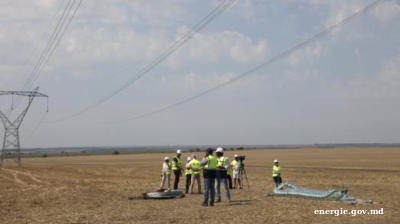Trump’s air spectacle was undeniably impressive for American audiences late over the weekend. Precision B-2 bombers traversing thousands of kilometres from Missouri to Qom to strike targets deep within the Iranian mountains represented a masterclass in military capability for the Americans.
Yet for all the tactical guff on display, the recent Israeli and American operations against the Islamic Republic’s nuclear infrastructure reveal a fundamental disconnect between means and ends – a triumph of military theatre over strategic thinking, dare I say brainless bombing led by a giddy Israeli prime minister who now has air superiority over his arch enemy and is using it to his delight. Who could have thought some vital ingredients to a successful air campaign were missing? Well, everyone and their dog probably, because this was likely conducted on signal to a great fanfare of emojis, but very little thought has gone into dealing with the issue.
Iran's nuclear programme today remains largely intact, despite the American headlines trumpeting successful strikes. The country's substantial stockpile of highly enriched uranium – sufficient raw material for multiple nuclear weapons – has simply vanished from its known storage locations. Rather than being destroyed, it appears to have been relocated ahead of the attacks, spirited away by the very logistical networks that Western officials claimed to have paralysed. This now makes a complete mockery of events and sounds the alarm bells.
This isn't speculation. Maxar satellite imagery shows Iranian heavy equipment arriving at sensitive sites days before the strikes, methodically sealing underground facilities and relocating critical materials. The narrative of a nation frozen in military paralysis crumbles when confronted with evidence of continued Iranian operational capacity. Something anyone with a background in this sector knew was always likely to be the case. Iran always held its nuclear cards close to its chest; now, intelligence agencies across the world are probably feeling a bit nervous about the destination of those isotopes.
The target selection reveals the operation's fundamental limitations. Whilst visible enrichment facilities bore the brunt of the attacks, Iran's vast underground centrifuge manufacturing complex remained untouched, according to IAEA reports on June 23. This sprawling facility, buried deep within a mountain near Natanz, represents the engine of Iran's nuclear programme – the means by which the country can rebuild and expand its enrichment capacity. Bunker-busting bombs carried by the B-2 stealth bombers, which arrived back in Missouri on June 22, wasted their journey, it seems.
More troubling still, Iran had recently declared a new enrichment facility ready for operation. International inspectors were scheduled to examine this site when the bombing commenced. It wasn't targeted. The implication is clear: Western intelligence either lacks comprehensive knowledge of Iran's nuclear infrastructure or the calibre of those working in certain administrations and the minutiae of information needed to understand this vastly complex subject are not connecting.
Military officials may celebrate the destruction of centrifuge halls, but Iran's reconstitution timeline remains alarmingly short. With its uranium stockpile preserved and manufacturing capabilities largely intact, the country will restore meaningful enrichment capacity within weeks rather than years – honestly who is to say that it hasn’t already got somewhere else running that is completely off the radar, Iran is the size of western Europe combined, with New Zealand and Iceland thrown in for fun.
The technical barriers to nuclear weapons development haven't been meaningfully raised; they've simply been temporarily displaced. This stands in stark contrast to the diplomatic constraints previously imposed through international agreements. The nuclear deal achieved what military force has failed to accomplish: genuine limitations on Iran's nuclear programme backed by comprehensive monitoring in exchange for a relaxation of sanctions. Yet the same Republican voices that dismissed diplomacy as insufficient now celebrate the displacement of nuclear material?
Such an approach might be defensible if clearly articulated to audiences in both the US and Iran, but the pretence of counter-proliferation obscures a more fundamental strategic gamble. Can Israeli and American military pressure alone achieve political transformation in Iran? Historical precedent suggests not, whilst the nuclear programme continues to advance during each cycle of escalation. This isn't about nuclear non-proliferation – it's about regime change via a death by a thousand cuts. And just like Iran in 2003, this Republican administration does not have a plan to replace a collapsed Islamic Republic. Put another way, President George Bush’s invasion of Iraq looked seemingly orderly compared to what Iranians are currently going through.
So nuclear material has not been destroyed but lost. Iran now may leap for a nuclear weapon in an undisclosed location, but also America has declared war by randomly bombing ahead of schedule via Signal, and “truthed” about regime change. All bets are off; this is uncharted territory.
Features

Is Donald Trump driving India further into China's embrace?
Since taking office, the Trump administration has introduced sweeping trade measures that at times appear to target India in particular.

World GDP forecasts raised, but US slowdown anticipated - Fitch
Global growth is now forecast to be 2.4% in 2025, up 0.2pp since June but a sizeable slowdown from 2.9% last year and below trend.

Moldova’s dramatic energy sector transformation
Chisinau ended decades of dependence on Russia in just four years — but will the upcoming general election derail the remaining reforms?

Local elections loom in Georgia
Georgia’s October 4 municipal elections are already mired in controversy amid a partial opposition boycott and mounting state repression, as major international observers refuse to participate.




